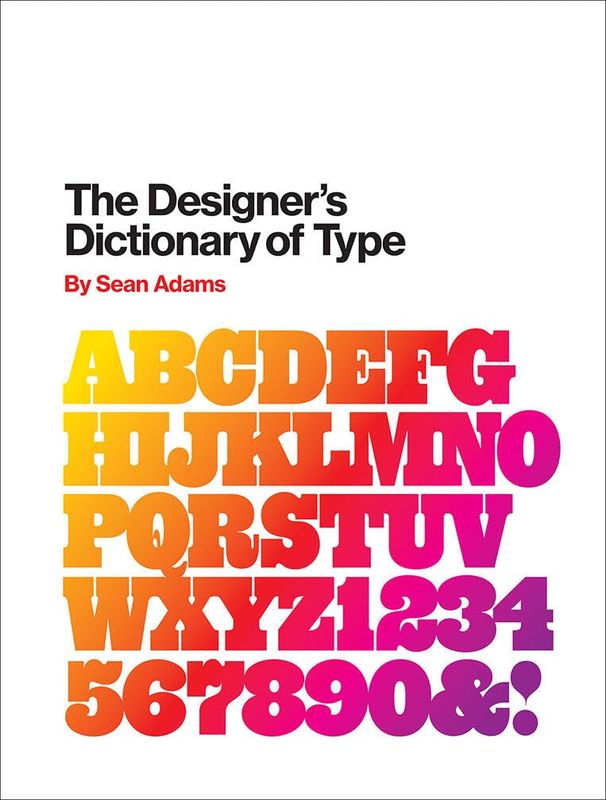Design for Hackers Book Summary
In 'Design for Hackers', David Kadavy takes you on an exhilarating journey through the principles of great design, tailored specifically for those who thrive in the digital world. Unpacking complex design concepts, he illustrates how understanding design can set you apart in a tech-driven landscape. Through practical insights and captivating examples, Kadavy empowers hackers and tech enthusiasts to enhance their projects and boost their creativity. Discover how color, typography, and layout can transform mundane code into visually stunning applications. Are you ready to unlock the secrets of design and elevate your creations to a whole new level?
By David Kadavy
Published: 2011
"Design is not just what it looks like and feels like. Design is how it works."
Book Review of Design for Hackers
Discover the techniques behind beautiful design by deconstructing designs to understand them The term 'hacker' has been redefined to consist of anyone who has an insatiable curiosity as to how things work—and how they can try to make them better. This book is aimed at hackers of all skill levels and explains the classical principles and techniques behind beautiful designs by deconstructing those designs in order to understand what makes them so remarkable. Author and designer David Kadavy provides you with the framework for understanding good design and places a special emphasis on interactive mediums. You'll explore color theory, the role of proportion and geometry in design, and the relationship between medium and form. Packed with unique reverse engineering design examples, this book inspires and encourages you to discover and create new beauty in a variety of formats. Breaks down and studies the classical principles and techniques behind the creation of beautiful design Illustrates cultural and contextual considerations in communicating to a specific audience Discusses why design is important, the purpose of design, the various constraints of design, and how today's fonts are designed with the screen in mind Dissects the elements of color, size, scale, proportion, medium, and form Features a unique range of examples, including the graffiti in the ancient city of Pompeii, the lack of the color black in Monet's art, the style and sleekness of the iPhone, and more By the end of this book, you'll be able to apply the featured design principles to your own web designs, mobile apps, or other digital work.
Book Overview of Design for Hackers
About the Book Author
David Kadavy
David Kadavy is an acclaimed author and designer, best known for his influential books on creativity and productivity. His notable works include 'Designing Your Life', 'The Heart to Start', and 'The Freelance Manifesto'. Kadavy's writing is characterized by its practical insights and engaging style, blending personal anecdotes with actionable advice, making complex concepts accessible to a wide audience. He is also a sought-after speaker and host of the popular podcast 'The Creative Podcast', where he explores the intersection of creativity and entrepreneurship.
Book Details
Key information about the book.
- Authors
- David Kadavy
- Published
- August 2011
- Publisher
- John Wiley & Sons
- ISBN
- 1119998956
- Language
- English
- Pages
- 359
- Genres
- Design ThinkingGraphic DesignDesign
Purchase Options
Support local bookstores: BookShop gives a portion of each sale to independent bookshops!
Similar books you might like →
Addiction by Design Book Summary
In 'Addiction by Design', Natasha Dow Schüll explores the fascinating intersection of technology, gambling, and human psychology. She reveals how modern gaming machines are meticulously engineered to foster addictive behaviors, drawing players into a relentless cycle of engagement. Through immersive narratives and compelling case studies, Schüll raises critical questions about free will and the seductive nature of design in our digital age. This thought-provoking investigation challenges readers to consider the impact of technology on their lives and society at large. Dive into this eye-opening journey to understand the dark artistry behind the designs that capture us.
Identity Designed Book Summary
In 'Identity Designed,' David Airey takes readers on a captivating journey through the art and science of branding. This visually stunning book showcases a rich collection of global identities, revealing the strategies behind their creation. Airey delves into the psychological impact of design, urging readers to think deeply about how branding shapes perceptions. With insightful case studies and expert commentary, it sparks curiosity about the essence of identity in modern culture. Perfect for designers and entrepreneurs alike, this book invites you to explore the power of visual storytelling in building a brand.
The Designer's Dictionary of Type Book Summary
Delve into the fascinating world of typography with 'The Designer's Dictionary of Type' by Sean Adams. This comprehensive guide unravels the intricacies of typefaces, revealing their unique personalities and historical contexts. Each entry offers insights that inspire creativity and enhance design skills, making it an essential reference for both novice and seasoned designers. With stunning visual examples, the book encourages a deeper appreciation for the art and science of type. Discover how the right type can transform your work and captivate your audience!
Designing with Type, 5th Edition Book Summary
Dive into the art and science of typography with 'Designing with Type, 5th Edition'. This essential guide unravels the intricacies of typefaces, spacing, and layout, empowering designers to elevate their work. Through a rich blend of practical insights and illustrative examples, Craig and Scala reveal how type influences design perception. Whether you’re a novice or a seasoned professional, this book opens your eyes to the transformative power of typography. Discover how to shape your visual communication and captivate your audience with every word.
The Design of Everyday Things Book Summary
In 'The Design of Everyday Things', Don Norman reveals the hidden principles behind effective design that shapes our everyday interactions. He explores the psychological underpinnings of how we perceive and interact with objects, highlighting the importance of usability and user-centered design. Through captivating examples, Norman illustrates how poor design can lead to frustration, while thoughtful design enhances our experience. This book challenges readers to rethink the functionality of everyday items, making them consider the design choices behind the objects they encounter. Ultimately, it invites us to demand better designs that cater to our needs, making the mundane extraordinary.
100 Things Every Designer Needs to Know about People Book Summary
In '100 Things Every Designer Needs to Know about People,' Susan Weinschenk unveils essential psychological principles that can enhance design effectiveness. With insights drawn from cognitive science, the book explores how people perceive, interact with, and make decisions about design. From the nuances of color perception to the importance of empathy in user experience, Weinschenk offers practical strategies for designers. Each principle is supported by fascinating research, making the content both informative and engaging. This enlightening guide equips designers to create more intuitive and user-friendly experiences, sparking curiosity about the intersection of psychology and design.
The Art of Game Design Book Summary
In 'The Art of Game Design,' Jesse Schell unravels the captivating world of game development, blending theory and practical insights. He presents a unique perspective that gaming is not just a skill but an art form, exploring what truly makes games immersive and memorable. With a combination of engaging anecdotes and hands-on exercises, Schell invites readers to think like designers and embrace creativity. The book serves as a comprehensive guide, making it an essential read for aspiring game creators and enthusiasts alike. Dive into the playful intricacies of design and discover the secrets that could inspire your next game masterpiece!
Sketching User Experiences: Getting the Design Right and the Right Design Book Summary
No summary available
Showing 8 of 30 similar books
Similar Book Recommendations →

David Kadavy's Book Recommendations
David Kadavy is an author, podcast host, and creativity expert, best known for his books The Heart to Start and Design for Hackers, where he explores the intersection of creativity, productivity, and design. Kadavy's work focuses on helping creators overcome procrastination, build meaningful habits, and find motivation to pursue their creative projects. He is also the host of the Love Your Work podcast, where he interviews high-performing individuals across various fields about their creative processes and productivity techniques. Kadavy’s insights stem from his own experiences as a designer and entrepreneur, offering practical advice on how to break through mental blocks and create with intention. His work emphasizes the importance of self-discipline, creativity, and a minimalist approach to both design and life. Kadavy’s books and podcast have garnered a global audience, positioning him as a thought leader in the realms of personal development and creative success.

Jeremiah Shoaf's Book Recommendations
Jeremiah Shoaf is a distinguished designer and writer, best known for his influential contributions to typography and design literature. As the founder of Typewolf, a renowned website that guides designers in selecting the perfect fonts, Shoaf has become a vital resource in the design community. His insightful articles and reviews on typography have earned him a significant following and respect among design professionals. Shoaf's work has been featured in numerous design publications, solidifying his status as an authority in the field. Beyond Typewolf, his broader contributions to design education have inspired and informed both aspiring and established designers worldwide.

Andrew Chen's Book Recommendations
Andrew Chen is a venture capitalist, entrepreneur, and thought leader in growth marketing, currently serving as a general partner at Andreessen Horowitz. Chen is known for his expertise in network effects, viral growth strategies, and marketplace dynamics, making him a sought-after advisor for startups looking to scale. Prior to joining Andreessen Horowitz, he worked in leadership roles at Uber, helping to grow the ride-sharing platform’s user base and develop key growth strategies. Chen is also a prolific writer, sharing his insights on growth, technology, and startups through his popular blog and newsletter, which has attracted a loyal following in the tech community. His work has helped shape how many startups approach user acquisition, retention, and product-market fit. As a venture capitalist, Chen focuses on early-stage companies in the consumer internet, SaaS, and marketplace sectors, and he has been involved in funding and advising several successful startups. His insights on technology and growth continue to influence both founders and investors alike.

Melanie Perkins's Book Recommendations
Melanie Perkins is an Australian technology entrepreneur and the co-founder and CEO of Canva, an online design and publishing tool that has revolutionized the graphic design industry. Born in Perth, Australia, she launched Canva in 2013 with the aim of making design accessible to everyone, regardless of their skill level. Under her leadership, Canva has grown to serve millions of users worldwide and has reached a multi-billion-dollar valuation. Perkins' innovative approach and dedication to user-friendly design have earned her recognition as one of the most influential women in technology. Beyond her entrepreneurial success, she is also a passionate advocate for diversity and inclusion in the tech industry.

John D Saunders's Book Recommendations
John D. Saunders is an accomplished digital marketing strategist and author known for his insightful works on entrepreneurship and business growth. With a sharp focus on leveraging digital tools to enhance business performance, Saunders has penned several influential books that have helped countless entrepreneurs streamline their operations and scale efficiently. His notable work includes "The Blockbuster Blueprint," a comprehensive guide on digital marketing strategies. Beyond writing, Saunders is a sought-after speaker, sharing his expertise at numerous industry conferences and workshops. His contributions extend to his role as the founder of 5Four Digital, where he continues to innovate and drive forward-thinking marketing solutions.

Michael Bierut's Book Recommendations
Michael Bierut is a renowned graphic designer, educator, and author, known for his influential work in the field of design. A partner at the prestigious design firm Pentagram since 1990, Bierut has created iconic branding and identity systems for clients such as The New York Times, Saks Fifth Avenue, and MIT Media Lab. His literary contributions include the acclaimed book "How to," which offers insights into his design process and philosophy, and "Seventy-nine Short Essays on Design," a collection of thought-provoking reflections on the design industry. As a senior critic in graphic design at the Yale School of Art, Bierut has mentored countless students, shaping the future of design education. His work has garnered numerous awards, solidifying his status as a leading figure in contemporary design.

Bret Victor's Book Recommendations
Bret Victor is a renowned American interface designer and computer scientist celebrated for his innovative contributions to interactive design and human-computer interaction. He is best known for creating dynamic, explorable explanations, which have significantly influenced the way educational content is presented and understood. Victor's seminal work, "Inventing on Principle," advocates for the integration of immediate feedback in creative processes, inspiring a new wave of interactive programming environments. As a former member of the Apple Human Interface team, he played a pivotal role in shaping modern user interfaces. Through his organization, Dynamicland, Victor continues to explore and expand the boundaries of immersive, collaborative computing environments.

Coleen Baik's Book Recommendations
Coleen Baik is an American designer, artist, and entrepreneur, known for her work in the tech industry, including as a founding team member of Twitter. Baik played a key role in shaping the user experience and design of Twitter in its early days, contributing to its iconic interface. She is also the founder of Baik Art, a multidisciplinary art studio that blends technology and visual art. Baik is passionate about using design to create meaningful and user-centered digital experiences, and she frequently speaks on topics related to innovation, design, and creativity. Her work has made her a prominent figure in the intersection of tech and design.
“Design is not just what it looks like and feels like. Design is how it works.”
Design for Hackers
By David Kadavy
Frequently Asked Questions
Explore Our Catalogue
Discover a world of knowledge through our extensive collection of book summaries.
Genres
Genres
Genres
Featured Collections
- Top Book Club Picks
- One-Stop Nutrition
- Summer Reads 2024
- Best Beach Reads 2024
- Work-Life Balance Guide
- Time Management
- Healthy Foods
- Entrepreneur Toolkit
- Mind & Body Wellness
- Future Tech Insights
- Leadership Essentials
- Financial Freedom
- Sci-Fi Masterpieces
- Parenting 101
- Books That Became Blockbusters
- Guide to a Healthy Pregnancy










